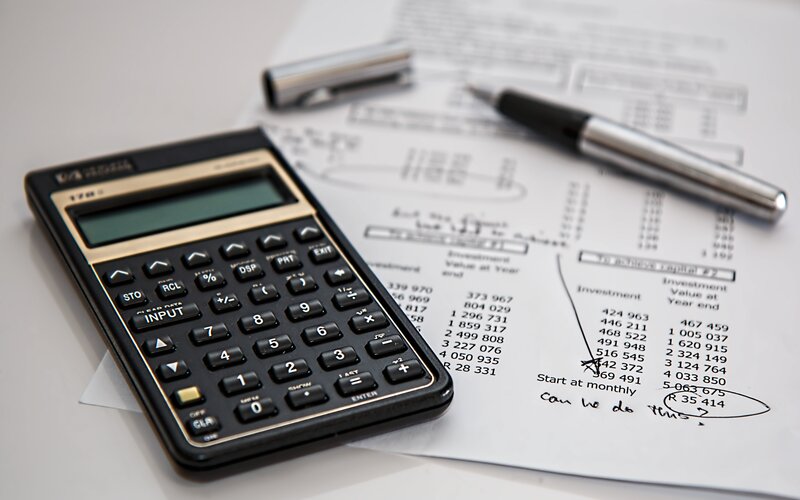Stagflation essentially means stagnating economic growth combined with high inflation. Stagflation is an unusually perfect storm of higher consumer prices yet a slowing Gross Domestic Product (GDP) growth rate. Generally if prices are increasing you can assume the economy is ticking along nicely - but stagflation bucks that trend. Excuse the pun.
An unfortunate byproduct of stagflation is that unemployment is also usually high. This presents a catch-22 for governments and central banks. Usually policies designed to curb inflation also put a lid on economic growth and employment, and vice versa. If economic growth is already in the toilet, it’s a dangerous game for policymakers to play.
- Could Australia experience stagflation?
- What can solve stagflation?
- Lessons from the 1970s oil crisis
Advertisement
Need somewhere to store cash and earn interest? The table below features savings accounts with some of the highest interest rates on the market.
Could Australia experience stagflation?
Compared to other developed countries, stagflation is pretty rare in Australia - or at least not as drastic. To assess the likelihood of stagflation, inflation and GDP growth need to be taken into account.
So far, so good
The most recent headline inflation (CPI) rate came to 5.1%. This represented the highest annual rise since the GST was introduced in the year 2000. Inflation means too much money chasing too few goods.
In May 2022 the Reserve Bank of Australia got on the front foot and began increasing the cash rate. Basically, as money gets too cheap, demand and spending builds up, and inflation spikes. To take the heat out of the market, the RBA can increase the cash rate to temper demand - it’s forecast to raise the cash rate target to 2.5% by the end of 2023.
The RBA likes underlying inflation to sit between 2 and 3%. The latest annualised underlying inflation data came in at 3.7%. If the next couple quarters of underlying inflation data come in the 2-3% target band then stagflation looks unlikely.
The other side of the coin is GDP. The most recent GDP data came out at 0.8% growth for the quarter, and 3.7% on an annualised basis.
This was ahead of market median expectations of about 0.7% for the quarter.
Commonwealth Bank economists forecast GDP growth to remain firmly in positive territory over the next couple of years. They expect it to hit an annual rate of 4.4% by the end of 2022, and grow by a further 2.6% by the end of 2023.
But there are headwinds forming
State Street Global Advisors say tightening monetary policy could be too much, too late.
Bruce Apted, State Street’s head of Australian portfolio management, flagged certain headwinds in the market that could lead to stagflation.
“Stagflation is the hot topic for investors right now and for a good reason. The likelihood of stagflation - the combination of high inflation with slowing growth - is fast becoming a base case for investors,” Mr Apted said.
“Historically it has proven a difficult economic environment and it is likely to test investment styles that favour low inflation and moderate growth.”
State Street has cut its global GDP growth forecast by a full percentage point to 3.6%, citing the Russia-Ukraine war, persistent Chinese Covid lockdowns, and an aggressive US Federal Reserve (the Fed) as potential headwinds.
“We anticipate that raw material prices will remain elevated throughout the year,” State Street’s report read.
“The Russia-Ukraine War has further highlighted Russia’s global energy influence and the reality that their exports of crude oil and natural gas cannot be easily replaced.
“Central banks around the world are set to drain money from the market at a rapid pace — at a time when growth is already slowing. It seems that the only way the Fed can engineer a soft landing at this point is if inflation eases in short order, allowing the Fed to ease off the brake.
“We can’t help but feel some nervousness around what may turn out to be excessively aggressive market pricing for rate hikes. We are concerned about a boom-bust scenario brought about by tightening that could prove to be too much, too late.”
What can solve stagflation?
It’s a tricky situation but there’s a few strings governments and central banks can pull to get out of the catch-22 that is stagflation.
1. Reserve Bank cash rate hike
Famed economist Milton Friedman said to curb inflation, the first step is for a central bank to hike its cash rate. The cash rate is a blunt instrument, and raising it can take some heat and inflationary pressures out of the market. However with that comes a slower economy and a more expensive credit environment for businesses, which could hurt employment.
2. Government spending
Government spending can have a two-pronged effect, and they may not be as blunt as a cash rate hike. The first is a government injecting cash into the economy, such as through infrastructure projects, which can get it flowing again and boost GDP. Second, if spending is done through infrastructure projects, employment can be boosted.
Government ‘spending’ can also be delivered through tax cuts. While bad for the government’s bottom line, if people have more money in their pocket, consumer confidence can rise, and hence spending increases. However, spending can increase inflation, so the right balance needs to be found.
When combined with modest cash rate hikes to curb inflation, this could be an effective one-two punch.
3. Time
Time heals all wounds, and Friedman argued that if left to the free market, time will generally sort out any price and economic pressures. Such temporary pressures include what’s called a negative supply shock - this includes things like oil, building materials, or food becoming more scarce, with prices rising off the back of it.
These are essential items for households and businesses but hopefully events causing their shortages are short-lived. Present events include the Ukraine war, “pervasive” policy on housing, oil-producing countries' cartel behaviour, Covid disruptions causing supply chain issues to materials such as timber and steel, and La Nina weather events.
The 1970s oil crisis - is history repeating itself?
One of the most prominent examples of stagflation in recent history was the 1970s oil crisis.
In the US, precipitating events included easy central bank policy during the 1950s and 1960s, aimed at keeping employment rates high after World War II. Some price volatility in the market was evident after President Nixon took the United States off the gold standard in the early 1970s.
Tension in the Middle East - the Yom Kippur War and the Iranian Revolution - furthered that, causing oil prices to spike dramatically beginning in 1973. But by 1974 is when the proverbial poo really hit the fan in Australia.
In 1974 Federal Treasurer Frank Crean warned the cabinet about “severe shortages of steel, bricks, timber and other building materials”.
Notice anything familiar?
The year 1974 in Australia began with unemployment at 2% (when the ABS measured the data quarterly), and ended the year at 5%. Consumer price inflation increased 16%. Government was also a source of inflation - the Whitlam Government increased spending by 46% in the 1974-75 financial year.
Australia went from a trade surplus of 1.5% of GDP in mid-1973 to a trade deficit of 3.2% by the end of 1974. By mid to late 1975, Australia was in full-blown recession with two consecutive quarters of negative GDP growth in the September and December quarters.
Photo by Diana Parkhouse on Unsplash



 Harrison Astbury
Harrison Astbury
 Harry O'Sullivan
Harry O'Sullivan

 Brooke Cooper
Brooke Cooper
 Alex Brewster
Alex Brewster

